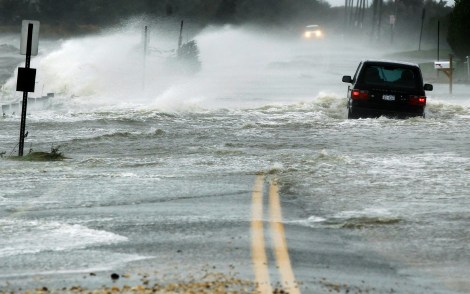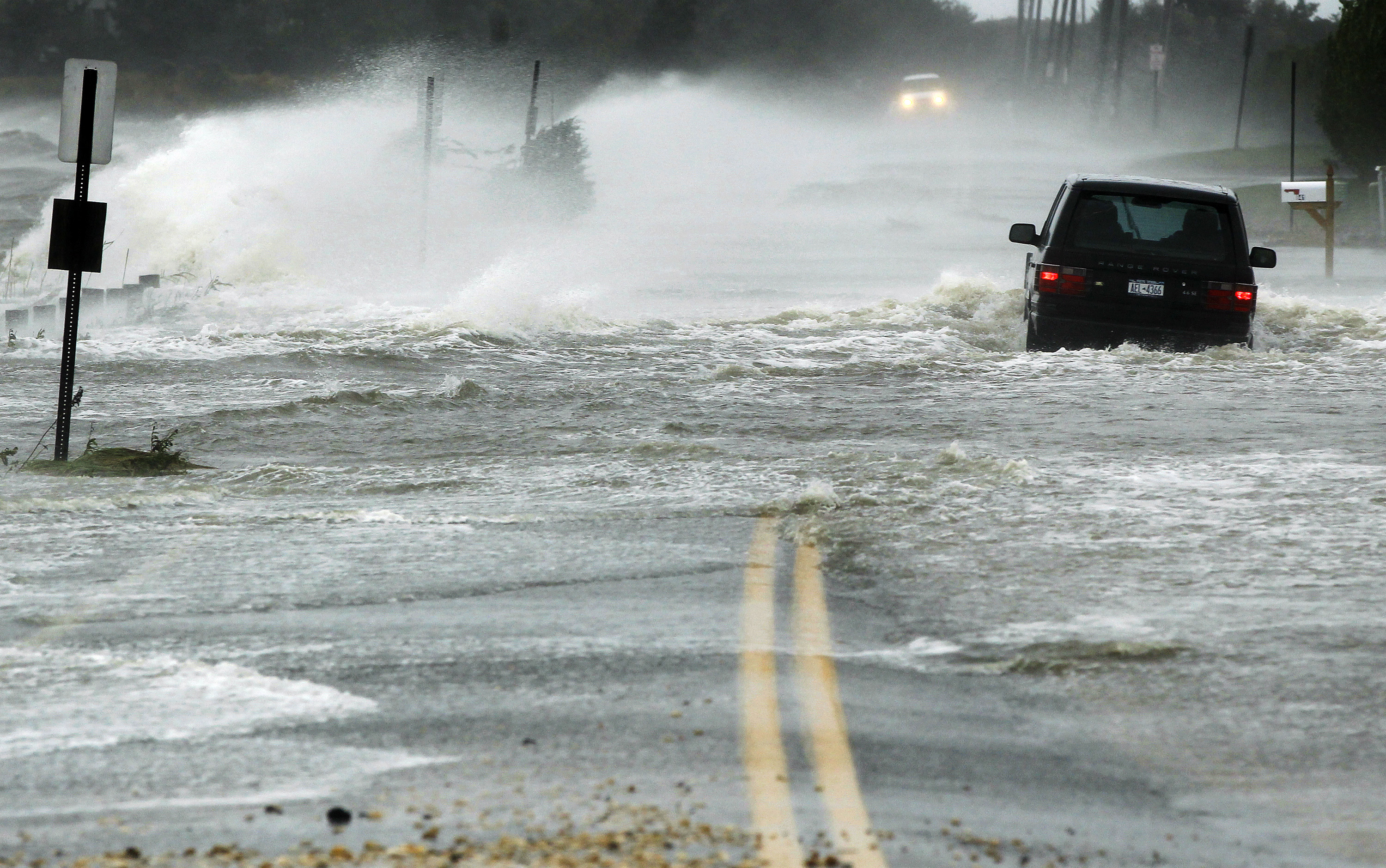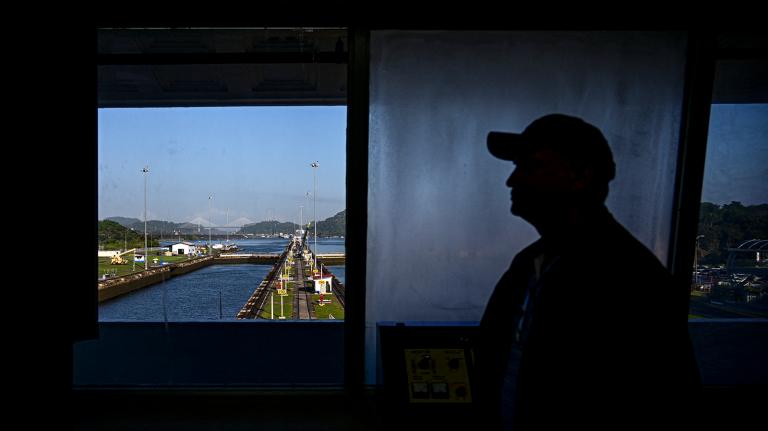New York’s problems this week were due largely to higher sea levels — sea levels that are already higher than they once were thanks to climate change, and due to grow higher still. But no one looking at New York Harbor last week was thinking, jeez, that water level seems higher than yesterday. The most insidious thing about climate change may be its incrementalism, that it is a series of tiny, ongoing shifts over time. It’s like watching a niece or nephew grow up from afar. If you’re with her or him every day, the changes aren’t noticeable. Over a longer timespan, the change is stark.

Reuters/Lucas Jackson
Eventually, it reaches a tipping point, as it has off the coast of Panama. From Reuters:
Every rainy season, the Guna people living on the Panamanian white sand archipelago of San Blas brace themselves for waves gushing into their tiny mud-floor huts.
Rising ocean levels caused by global warming and decades of coral reef destruction have combined with seasonal rains to submerge the Caribbean islands for days on end.
Once rare, flooding is now so menacing that the Guna have agreed to abandon ancestral lands for an area within their semi-autonomous territory on the east coast of the mainland. …
It is the largest of the Guna’s 45 inhabited islands, and its planned evacuation is among the first blamed largely on climate change. Scientists say worldwide sea levels have risen about 3 millimeters (0.12 inch) a year since 1993. Recent research suggests they could rise as much as 2 meters (6.5 feet) by 2100.
This sea is the same sea that flows into New York Harbor.
Because these tiny changes are so easy to ignore, the U.S. government has been lax in preparing for them. (Well, that and because politicians are rewarded for responding to crisis, not preventing it.) From The Washington Post:
As the Northeast struggles with the aftermath of the massive storm Sandy, many experts say the government for years has underestimated how much of the nation is prone to flooding, given the increasing likelihood of extreme weather because of climate change and the prospect of future sea level rise.
These experts, who include not only environmentalists but also community planners, insurers and fiscal conservatives, have pressed agencies such as the Federal Emergency Management Agency to rethink the way the government evaluates the risk of floods. Such a change could affect where and how infrastructure is built and make it harder to develop vulnerable areas.
FEMA, which is updating flood insurance maps from the 1980s, is setting up a “technical mapping advisory council” that will study how the agency might take future climate change into account. At this point, it still bases its analysis on historical data.
You may remember that the Congress tried to fix this problem over the summer, but then the Republicans decided they wanted to argue about abortion.
This is pressing not only because of Sandy. It’s pressing because we may be seeing worse effects from warming than we originally predicted. From Scientific American:
The latest data from across the globe show that the planet is changing faster than expected. More sea ice around the Arctic Ocean is disappearing than had been forecast. Regions of permafrost across Alaska and Siberia are spewing out more methane, the potent greenhouse gas, than models had predicted. Ice shelves in West Antarctica are breaking up more quickly than once thought possible, and the glaciers they held back on adjacent land are sliding faster into the sea. Extreme weather events, such as floods and the heat wave that gripped much of the U.S. in the summer of 2012 are on the rise, too. …
The X factors that may be pushing the earth into an era of rapid climate change are long-hypothesized feedback loops that may be starting to kick in. Less sea ice, for example, allows the sun to warm the ocean water more, which melts even more sea ice. Greater permafrost melting puts more CO2 and methane into the atmosphere, which in turn causes further permafrost melting, and so on.
Brad Plumer argues that slowing the rise of the oceans may be the best we can hope for. If we don’t slow that rise?
According to [National Center on Atmospheric Research] projections, sea levels could rise as much as 34 feet, or nine meters, by 2300 if emissions continue unchecked (though modeling projections that far out have very large uncertainties, so don’t take this as a definitive number). To get a sense of what a nine-meter rise would look like, check out this interactive map. South Florida would be underwater. So would New Orleans. And Shanghai. And the Netherlands. And Bangladesh. But this is also 200 years in the future. That’s a big reason why climate change is such a difficult problem to deal with.
It’s 200 years in the future, assuming the process isn’t speeding up. And as New York City saw on Monday, that 200-years-away apocalypse doesn’t mean that we’ve got nothing to worry about in the meantime.
Just keep watching the sea.


